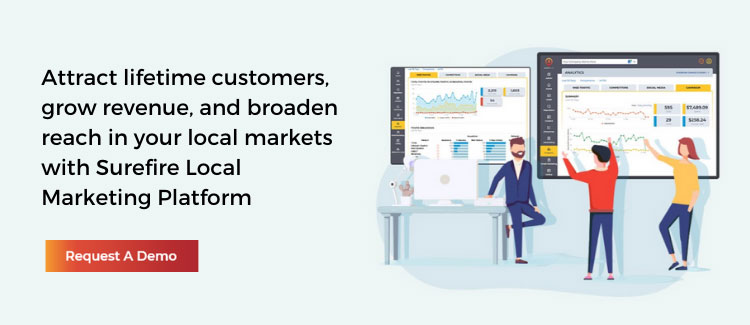Just a few months ago, the business world was turned upside down. Billions of people are now staying home and what used to be normal is basically forbidden. Your routines, needs, and priorities are changing almost daily. Trends have continued to change because sales and marketing plans are continuing to evolve. Due to COVID-19, local marketing trends are showing that businesses must be digitized as non-digital avenues are practically unavailable.
Since Google owns about 86% of the search engine market share, it’s useful to understand their trends and how you can adapt to them. Let’s delve into Google’s latest marketing recommendations and explore how you can improve based on local marketing trends.
Identifying Google Trends in Your Local Community
Local businesses are currently in a dynamic environment with daily changes as it’s difficult to grasp people’s evolving needs. Google Trends allows you to search for a term or topic and identify exactly how it’s trending. You can use this to explore what’s top of mind for your audience. This will help you pinpoint how to adjust your online advertising campaigns to meet your customers’ expectations. I’m going to offer you 3 tips on how to use Google Trends data to help you operate through business disruptions and ease your customer base.
1. Compare search terms
You can add topics for simultaneous comparison by clicking + Compare and typing in your search term. By using this feature, you can uncover when there was an increase, decrease, or steadiness in searches for keywords related to your business.
2. Narrow your search by time
If you adjust the time frame in the drop-down, you’ll be able to find relevant information based on the time period you choose. You can also check how trends have evolved over a longer period of time. Narrow your search by time to understand if a term’s popularity is steady, seasonal, or influenced by events.
3. Be geographically relevant
By refining your search by region or city, your results will include a heat map showing popular areas where your term is being searched. This capability will help you identify the search volume in your local area instead of worldwide. Google Trends sometimes even allows you to get information for a specific metro area.
Google Local Marketing Recommendations
Once you’ve done some research in Google Trends to find data applicable to your local business, you can start making adjustments to your marketing campaigns. As you’re looking to reopen your brick-and-mortar or get back to offering your services, Google has provided some recommendations to help you reconnect with customers and relaunch your local marketing.
1. Assess Your Local Market
It’s necessary to keep yourself updated on the rules and regulations released by your local government. This will help define your timeline for reopening. There’s a good chance that you will need to reevaluate your customers’ needs based on the changes within your local community. Lastly, customize your marketing campaigns by region and zip codes while considering the potential for different impacts on each location.
2. Communicate Your Latest Business Updates and Changes
Google has made many updates to accommodate local businesses and their customers during this time. Ensure that your business profile has been updated with the correct hours, as well as indicating if your storefront is open. Another great opportunity is to reconnect with customers through Google Local campaigns. Focused on simplicity and driving your offline goals, these campaigns are designed to use Google advertising to business to your storefront.
3. Keep Customers Informed on Safety Measures
The biggest challenge to overcome is proving that you are taking the proper precautions as you’re reopening your business. They must be able to see that you are actively taking the necessary safety measures. Announcing changes via your website isn’t enough. Be sure to broadcast on your entire online presence, including your website, Google My Business page, social media platforms, your actual storefront, etc.
4. Stay Flexible and Use Automation to Adjust in Real-Time
With Google’s Smart Bidding, you’ll be able to optimize store visits by using the same bid strategies used for online conversions. If store visits are crucial to your business, you can use conversion tracking to help see how your ad clicks and impressions influenced the visits. Ultimately, your campaigns will be optimized and agile to dynamically shift based on real-time results.
5. Keep a Pulse on the Local Landscape and Changing Demands
Consistently refer back to Google Trends and check on the search insights to help you gain a better understanding of consumer behavior within your service area. Keep on top of measuring your ad campaigns and pay attention to how new foot traffic is leading to conversions. It also may be useful to understand how others are responding to similar business challenges on Think with Google.
Controlling Your Online Presence Beyond Google
Google local marketing trends will certainly help you adapt to dynamic changes within your community. But controlling your entire online presence beyond Google will help you navigate these uncertain times even more efficiently. It’s time to take back control of your digital marketing presence with the Surefire Local Marketing Platform.
Surefire Local’s unmatched combination of software and services enables businesses to become more productive, have transparency of marketing spend and ROI, and manage content and customers all in one place. You’ll never be left wondering what is happening and how your marketing is contributing to revenue. Through our software, you have complete control of all your major marketing channels and will know exactly where new customers are coming from, the activities that drove them to convert, and how much it cost you. Your data insights will lead you to take action to attract and engage new customers through measurable, multi-channel marketing.







